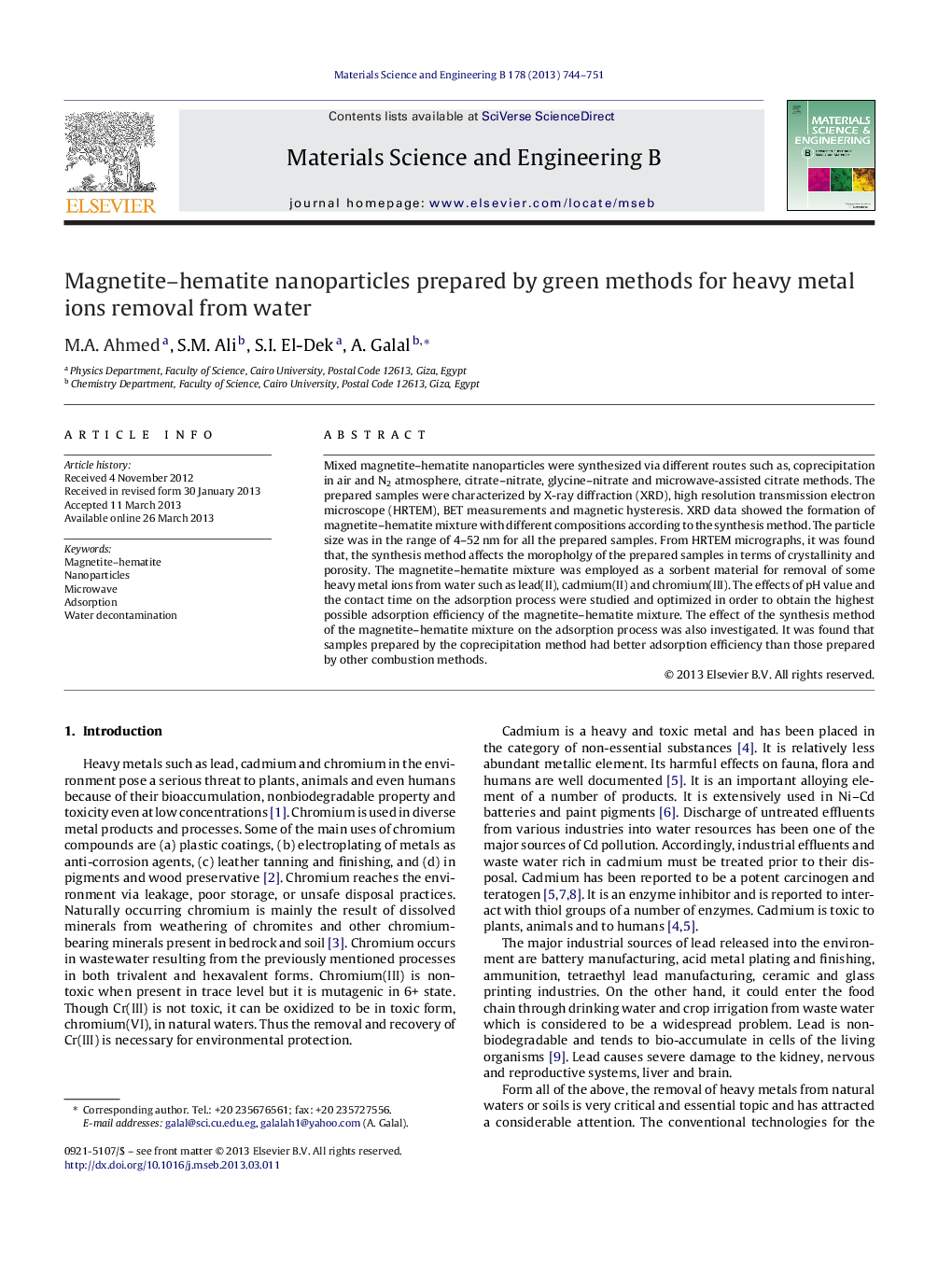| Article ID | Journal | Published Year | Pages | File Type |
|---|---|---|---|---|
| 1528897 | Materials Science and Engineering: B | 2013 | 8 Pages |
•Mixed magnetite–hematite nanoparticles were synthesized via different routes.•Prepared samples were characterized by XRD, HRTEM, BET and magnetic hysteresis.•The material was employed as a sorbent for removal of some heavy metal ions from water.•The effects of pH and the contact time on the adsorption process were studied and optimized.
Mixed magnetite–hematite nanoparticles were synthesized via different routes such as, coprecipitation in air and N2 atmosphere, citrate–nitrate, glycine–nitrate and microwave-assisted citrate methods. The prepared samples were characterized by X-ray diffraction (XRD), high resolution transmission electron microscope (HRTEM), BET measurements and magnetic hysteresis. XRD data showed the formation of magnetite–hematite mixture with different compositions according to the synthesis method. The particle size was in the range of 4–52 nm for all the prepared samples. From HRTEM micrographs, it was found that, the synthesis method affects the moropholgy of the prepared samples in terms of crystallinity and porosity. The magnetite–hematite mixture was employed as a sorbent material for removal of some heavy metal ions from water such as lead(II), cadmium(II) and chromium(III). The effects of pH value and the contact time on the adsorption process were studied and optimized in order to obtain the highest possible adsorption efficiency of the magnetite–hematite mixture. The effect of the synthesis method of the magnetite–hematite mixture on the adsorption process was also investigated. It was found that samples prepared by the coprecipitation method had better adsorption efficiency than those prepared by other combustion methods.
Graphical abstractThe negatively charged cubic magnetite nanoparticles, prepared by the coprecipitation method in N2 atmosphere, can adsorb up to 99% of the positively charged toxic heavy metal ions at a proper pH value.Figure optionsDownload full-size imageDownload as PowerPoint slide
